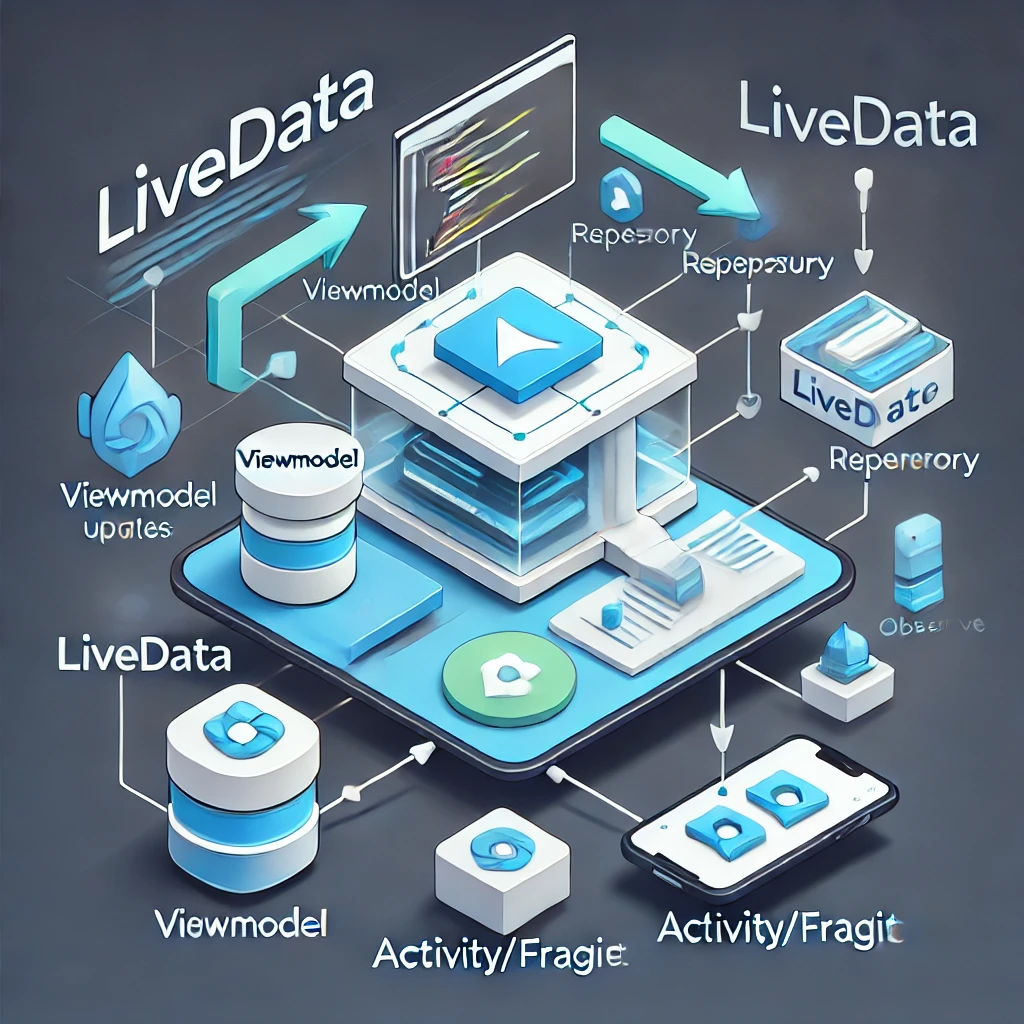Introduction
Developing Android applications often requires a robust way to handle data changes and update the user interface dynamically. This is where LiveData, an essential component of Android Jetpack, comes into play. LiveData makes it easier to manage UI updates while respecting the app’s lifecycle.
In this blog, we’ll explore what LiveData is, its benefits, and how to use it in your Android apps effectively.
What is LiveData?

LiveData is an observable data holder class that is lifecycle-aware. It ensures that UI updates are only made when the associated lifecycle (such as an activity or fragment) is in an active state, preventing unnecessary updates and potential crashes.
Why Use LiveData?
- Lifecycle Awareness: Updates are only sent to active observers, reducing memory leaks and unnecessary computations.
- Automatic Updates: Observers receive real-time updates whenever the data changes.
- Seamless Integration: LiveData integrates seamlessly with ViewModel, making it easy to separate UI logic from data handling.
- Simplifies Code: Reduces the need for manual lifecycle handling and simplifies the overall code structure.
How LiveData Fits Into Android Architecture
LiveData is often used in conjunction with other components like ViewModel and Repository in the MVVM (Model-View-ViewModel) architecture. Here’s a simple workflow:
- Repository: Fetches data from the database or remote APIs.
- ViewModel: Stores the LiveData object and provides data to the UI.
- Activity/Fragment: Observes LiveData and updates the UI accordingly.
How to Use LiveData in Android
Let’s dive into an example to understand how LiveData works.
Step 1: Add Dependencies
Add the following dependency in your build.gradle file:
implementation "androidx.lifecycle:lifecycle-livedata-ktx:2.6.1" Step 2: Create a ViewModel with LiveData
public class LiveDataViewModel extends ViewModel {
private MutableLiveData<String> message;
public LiveData<String> getMessage() {
if (message == null) {
message = new MutableLiveData<>();
message.setValue("Hello, LiveData!");
}
return message;
}
public void updateMessage(String newMessage) {
if (message != null) {
message.setValue(newMessage);
}
}
} Step 3: Use LiveData in an Activity
public class MainActivity extends AppCompatActivity {
private LiveDataViewModel viewModel;
private TextView messageTextView;
@Override
protected void onCreate(Bundle savedInstanceState) {
super.onCreate(savedInstanceState);
setContentView(R.layout.activity_main);
messageTextView = findViewById(R.id.messageTextView);
Button updateButton = findViewById(R.id.updateButton);
// Get ViewModel instance
viewModel = new ViewModelProvider(this).get(LiveDataViewModel.class);
// Observe LiveData
viewModel.getMessage().observe(this, message ->
messageTextView.setText(message)
);
// Update message on button click
updateButton.setOnClickListener(v ->
viewModel.updateMessage("LiveData Updated!")
);
}
} Step 4: Layout (activity_main.xml)
<LinearLayout
xmlns:android="http://schemas.android.com/apk/res/android"
android:layout_width="match_parent"
android:layout_height="match_parent"
android:orientation="vertical"
android:gravity="center">
<TextView
android:id="@+id/messageTextView"
android:layout_width="wrap_content"
android:layout_height="wrap_content"
android:text="Hello, World!"
android:textSize="24sp"
android:padding="16dp" />
<Button
android:id="@+id/updateButton"
android:layout_width="wrap_content"
android:layout_height="wrap_content"
android:text="Update Message" />
</LinearLayout> Best Practices for Using LiveData
- Keep LiveData Immutable: Use
MutableLiveDataonly within the ViewModel. Expose it asLiveDatato the UI. - Avoid Business Logic in UI Components: Let ViewModel handle data logic, and keep activities/fragments focused on rendering the UI.
- Combine with LifecycleOwner: Always associate LiveData with a lifecycle-aware component like an activity or fragment.
Conclusion
LiveData is a powerful tool for managing data in Android apps. By integrating LiveData with other architecture components, you can create apps that are robust, efficient, and easier to maintain. Start using LiveData today and take your Android development to the next level!
For more details Visit: https://developer.android.com/topic/libraries/architecture/livedata
